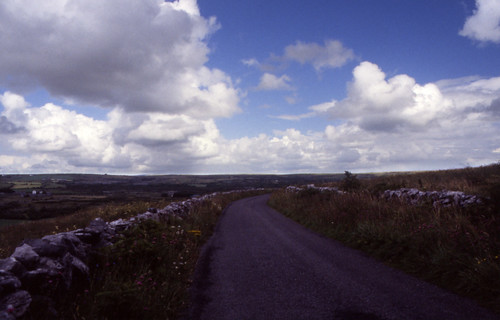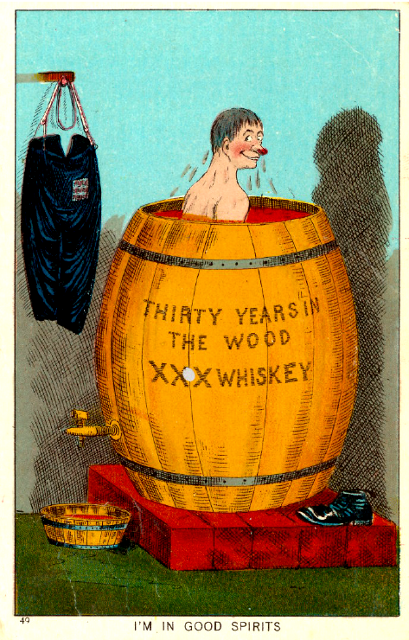Saturday, January 23, 2010
Yep, non-alcoholic. Beer.
Why bother?
Plenty of reasons. Maybe you’re knocked up, or trying to cut down on the liver damage, or taking a medicine what ain’t booze compatible, or what-have-you. The fact is sometimes you want to hang out and have the taste of an oat soda from a longneck like everybody else. We can respect that. The truth of the matter is nobody will know you’re drinking a diet oat soda unless they study the label. The labels, suspiciously, look like regular beer labels. So they’ll have to study hard, which will be a problem unless they’re suckin’ back one of these.
So, wanna try one? PRO-TIP: go continental.
Forget anything domestic, it’ll taste even more like fizzy water than the regular stuff. The best two I’ve had were Clausthaler & Kaliber.
Clausthaler has a nice afterbite of hops, much like a continental ale. Not much body, but you shouldn’t expect any. NA beer is about sacrifices, like sacrificing your future to the city council of Bethesda, Maryland. Oh, sorry… got a lot on my mind lately.
The other brand worth trying is Kaliber. This is more like a lager style. It is far maltier with a sweet taste. No real bite of hops to speak of.
Neither could every be mistaken for regular beer, but they’re worth a shot if you’re on the wagon. Sometimes you can’t/shan’t drink alcohol and we understand. We just want you to have a good time while doing it, and sometimes one of these faux brews will help you feel better about the tough decisions one must make in life. And hopefully you’ll be able to enjoy a regular brew at some time in the future.
But if you’re not drinking actual beer, do the rest of us a favor and be the designated driver or the you-fly-I-buy pilot for a liquor run, OK?
Being the second tale in the adventures of three travelers learning the international language of liquor

Ireland is, first, a blur of ancient stone walls flashing out of the night as we blast down back country lanes, fifty kilometers per hour on the black left side of the road. Sarah has only been driving for a month. She and her sister Emma collected us after we touched down at Shannon, we weary and bleary and them bearing broad smiles and accents. They were, immediately, the most fun people I had ever met, but it was now obvious that in this Rover was where we were going to die, grinning, sung off to heaven by broadcast American blues music.
No one dies in Ireland before they’ve had a pint.
(Continued)
Wednesday, September 23, 2009
CAMRA we ain’t – no matter how soundly we stand shoulder-to-shoulder with our fellow blokes over the pond – we do enjoy cheap shitty too-cold fizzy lager from time to time. We do very much support them in their mission for the proliferation of proper beer, drinker’s rights & pubs.
To that end but somewhat closer to home, we heartily recommend the musings of Mr. Kevin Weedon, friend of a fine brew and to many of us truly, on his “Real Beer Blog“. Despite his handicap of using the B-word, you should fear not and peruse his findings.
I am currently working on syndicating him here (because I know how truly drunk and lazy most of you are – and us, for that matter) & hope to have these tubes connected soon. Shit be workin, Holmes! Peep that sidebar with the latest 5 of his musings in it. Still working on having them show up here as proper entries. Until then, I’ll enjoy Now enjoying another of the fine beers in my Two Brothers Brewing sampler case from Costco – their Cane & Ebel really grabbed me, and their Bitter End IPA is damn fine as well.
Sunday, September 13, 2009
The 44 Cordial – a rum-based cordial made with orange and coffee – is supposedly Madagascar’s “tropical adaptation of a homemade liqueur that’s popular in France, where it’s called Quarante-quatre and is sometimes made with cloves.” I’m quoting Saveur Magazine here, from March ’08, but I personally found it on this Something Awful forum thread from December ’07. So suck it, Saveur, the Goons are getting the credit for this one.
(Continued)
For my birthday, one of my buddies got me a membership to the C&H Beer Of The Month Club, giving me a twelve-pack of microbrews from different breweries around the country every month. This month: Diamond Bear Presidential IPA, Alley Kat Amber, Licher Pilsner, and Florida Hurricane Reef Pale Ale.
(Continued)
Here in North Carolina it’s basically impossible to buy Chartreuse, Maraschino, or Aquavit. There’s no Fernet Branca or Creme de Violette. No rye to speak of, other than Jim Beam’s unpleasant yellow-label. We’re one of nine states with a government-controlled monopoly on liquor sales, so the state decides what I get to drink.
As much as I want to call that “fascist” or “freedom-hating” or “unamerican” or “socialist” and make a stink at town-hall meetings and whatnot, my desire for invective does not outweigh my commitment to factual accuracy. Alcohol control states are not inherently freedom-hating: Oregon is another of the nine, and yet our own Ouroboros seems to be just fuckingly tripping over bottles of Maraska Maraschino and delightful locally-produced artisan spirits. It’s just that my fellow North Carolinians don’t produce sufficient demand for the good shit and I ain’t got the ducats to order a case of bottles.
So, OK, fine. If you can’t drink globally, produce locally. Thus I decided to start making my own liqueurs and/or cordials. There’s two good reasons to do this. One: you can make delicious new things that you’ve never tried before – stuff they don’t sell in stores. And two: if done right it’s dirt-ass cheap. So let’s start with some basics. (Continued)
Saturday, August 22, 2009
We love Gatorade. I mean we really like the stuff – it’s great on its own, wonderful to mix with vodka for that fast energizing drunk and it’s wonderful for treating a hangover the next day. In fact, the only thing we don’t love about it is the price. Seriously, for some sugar, color, flavor and salt they charge an arm and a leg.
As chief engineer I set forth to figure out what was doing and I think I managed to reverse engineer a passable fauximile. Mix up a big batch for your next party and you’ll be glad you did the next morning.
You’ll note this recipe is in metric. That’s because the imperial system is dumb. DUMB AS HELL. Be smart; go metric.
TAKE THIS:
- 150 grams sugar (a bit more than half a cup). I like turbinado/demerara/raw/what-have-you sugar.
- 2 grams table salt (about half a teaspoon). This is your source of sodium ions, from sodium chloride.
- 1 gram salt substitute (about a quarter teaspoon). This provides the other necessary ion, potassium.
- 1 packet store-brand ripoff of Kool-Aid mix. The real stuff tastes… well, like the real stuff. Store brands don’t taste like that and the finished product will taste more like the stuff you’re trying to copy.
MIX TOGETHER WITH:
- 2 liters of water. Tap, preferably.
Vary the sugar and table salt to taste.
Stay hydrated, my drunk friends.
…and still wet behind the ears.

I celebrated my 30th successful orbit about the sun by finishing all the open bourbon in the house. The Doctor and I also had a joint birthday party (observed) on the deck and y’all left a shitload of cheap beer at my house.
The Cheap Beer Challenge 2009 was met and bested. Reviews and recommendations to come tomorrow.
For my birthday, one of my buddies got me a membership to the C&H Beer Of The Month Club, giving me a twelve-pack of microbrews from different breweries around the country every month. This month: Flying Dog’s Kerberos Tripel, Herold Brewery’s Bohemian Black and Granät Lagers, and Boulder Beer’s Flashback Anniversary Ale.
(Continued)
- WEEKNIGHT: Tuesday
- HOOD: St. Pauli, Hamburg
- BARS HIT: Lehmitz, Der Clochard, Night Light
- ODDITIES: Overzealous Irishmen waving double-ended dildoes
- LEVEL OF INEBRIATION: Jolly to blackout
Hamburg, second largest city in Germany, is a dirty old town. Mostly a dock city, it is a place full of beautiful architecture and attractive prostitutes. And there is no neighborhood in Hamburg—and most of the world—more filthy and vice-ridden than St. Pauli (the beer is a lie—the women here are neither jolly nor beer-laden). But Alex and I had one night left until the Wacken Open Air festival, the world’s largest heavy metal concert, and so we figured hey, let’s spend a night hopping around Hamburg’s metal bar scene and walking along the infamous Reeperbahn, along with the helpful insights of my new favorite website, MetalTravelGuide.com. Horns up, thumbs tucked, we went.

(Continued)


